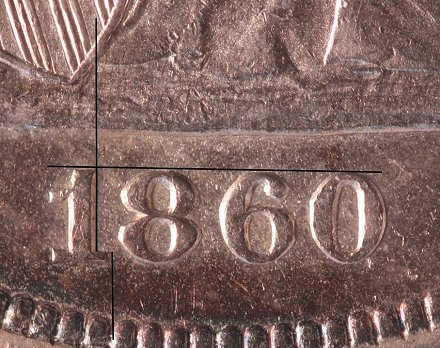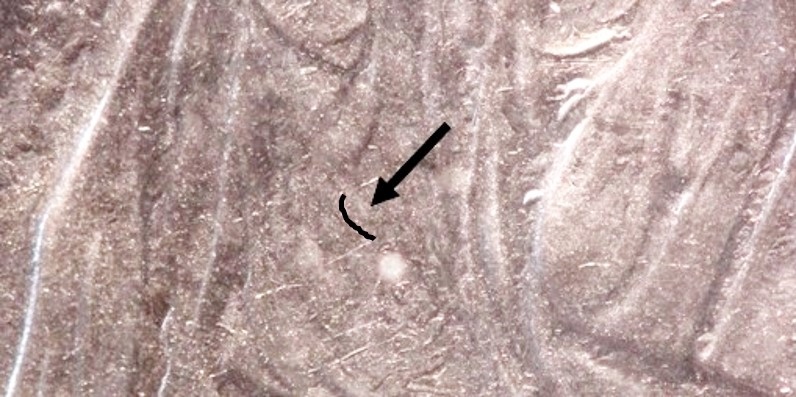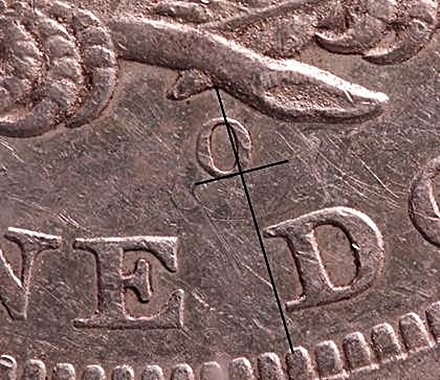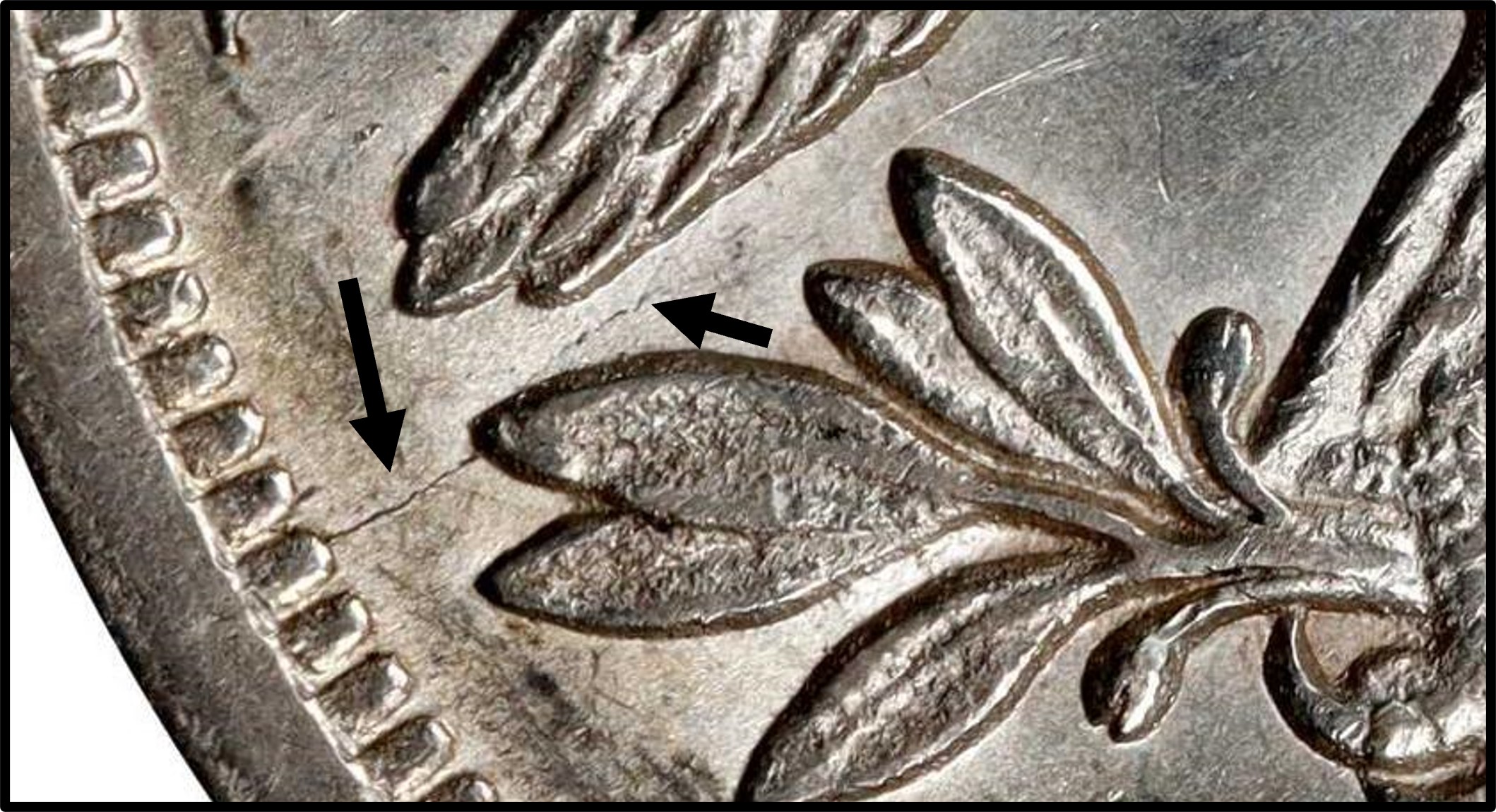|
|
Comments: This is the fifth and final use of Obverse 2 and the second and final use of Reverse E. |
Obverse 2 The photo below shows the Obverse 2 attribution grid.  1860-O Obverse 2 attribution grid Obverse 2 exhibits minor repunching on the date, visible above the 8 and 0 and inside the upper loops of the 8 and 6. Die polish lines extend into the field from the rock above 60, almost horizontal, slanting slightly down to the left. All these markers were removed by die polishing prior to the use of Obverse 2 to strike OC-10 examples. The marker that remains after die polishing and is visible on all usages of Obverse 2 is a circular mark on Miss Libertyís gown below the left breast. This is indicated by the arrow in the following photo. This die line is shallow, but visible on most coins in AU or better. It may be difficult to see if the coin is heavily bag-marked or has excessive contact marks. Itís often difficult to see in photos. I've enhanced the die line on the photo below to aid in attribution.  1860-O Obverse 2 circular die line For simplicity, the date position should be considered as the best feature to attribute this obverse. It's unique enough to separate it from the other 1860-O obverse dies.
|
Reverse E displays no notable die markers except for its mintmark position, shown in the following photo. The mintmark is slightly lower and a little more to the right than Reverse D.  1860-O Reverse E mintmark
The die crack which defines state b is shown in the following photo.  1860-O Reverse E - State b die crack No later die states have been observed. OC-10 has been found only with reverse die state b. |
Copyright © 2015-2021, by Dick Osburn and Brian Cushing, All rights reserved. |
